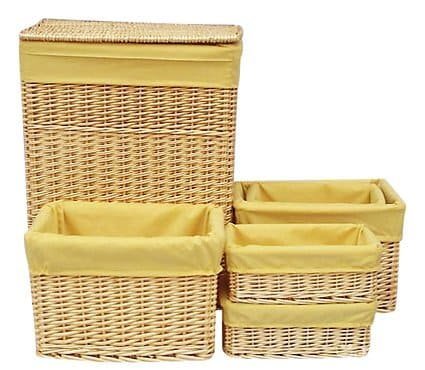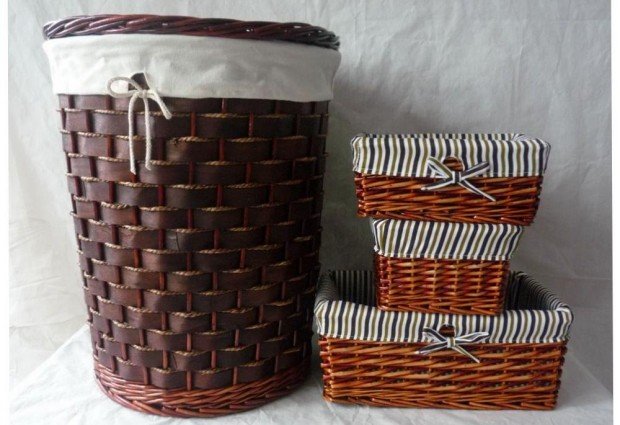
Wicker is often misunderstood. Many people think it’s a material, but it’s actually a weaving technique. Let’s explore what makes wicker unique.
Wicker is the art of weaving flexible materials, like rattan1 and bamboo2, into intricate designs for furniture and home decor.
Want to know more about the materials used in wicker? Keep reading for details on its composition and maintenance.
What is Wicker Made Of?
Wicker isn’t a material—it’s a technique. The materials commonly used in wicker include natural fibers like rattan, bamboo, and willow. These materials are flexible, durable, and ideal for weaving.
Wicker is made by weaving flexible materials such as rattan, bamboo, and willow. These fibers create beautiful, functional designs.

Wicker weaving has been practiced for thousands of years, using materials found in nature. The most well-known material for wicker is rattan. It’s a climbing vine native to Southeast Asia. Rattan is highly valued because it is strong, flexible, and lightweight, making it perfect for weaving intricate patterns.
Bamboo is another popular choice. Bamboo is stronger and denser than rattan but still flexible enough for wickerwork. It’s also an environmentally friendly option because bamboo grows quickly and can be harvested without harming the environment.
Willow, which grows in temperate climates, is also used for wicker. Willow branches are pliable when freshly cut, which makes them easy to weave. This material is commonly used for baskets and other small items.
While these natural materials are the most common, there’s also synthetic wicker. This is made from plastic or resin, which mimics the look of natural wicker but is more durable and resistant to weather. Synthetic wicker is often used in outdoor furniture because it’s water-resistant and can withstand UV rays.
Wicker Materials Breakdown:
| Material | Source | Flexibility | Durability | Common Uses |
|---|---|---|---|---|
| Rattan | Southeast Asia | Very flexible | High | Furniture, Baskets |
| Bamboo | Asia, Americas | Moderate | Moderate | Furniture, Baskets |
| Willow | Europe, North America | Moderate | Moderate | Baskets, Decorative items |
| Synthetic | Plastic/Resin (Man-made) | High | High | Outdoor Furniture |
When choosing wicker, it’s important to consider the use case. Natural wicker is perfect for indoor furniture and decor, while synthetic wicker works best in outdoor spaces.
Can Wicker Get Wet?
Water can damage wicker3 if it’s not cared for properly. Wicker is made from natural fibers4, which can absorb moisture. When exposed to too much water, these fibers can weaken and lose their shape.
Wicker is water-sensitive. Exposure to moisture can cause natural fibers to weaken, crack, or lose shape.

Wicker items like furniture and baskets are often used in outdoor spaces, but they should be protected from the elements. Natural wicker—made from rattan, bamboo, or willow—can be damaged by excessive moisture. When wicker gets wet, the fibers may absorb the water, causing them to swell. This swelling can lead to cracking, warping, and even breaking.
If wicker is left in a damp environment, mold and mildew can also start to form. These growths can damage the fibers and leave unsightly stains. Prolonged exposure to water also weakens the wicker over time. This is why it’s important to keep wicker away from direct exposure to rain or damp conditions.
However, synthetic wicker5—made from materials like resin or plastic—can withstand water better. Synthetic wicker is designed to be weather-resistant, making it ideal for outdoor furniture. While it can handle rain, it’s still recommended to cover it during heavy storms or snowfall to maintain its condition.
To care for wicker, always dry it off after it gets wet. If wicker furniture or decor does get soaked, gently blot the moisture with a soft cloth. Then, let it dry in a well-ventilated area. Avoid using direct heat or placing it under intense sunlight, as this can cause the fibers to become brittle and crack.
Water Damage Prevention Tips:
| Tip | Why It Helps |
|---|---|
| Keep indoors during rain | Protects wicker from water absorption and swelling. |
| Use water-resistant covers6 | Shields wicker from moisture and weather. |
| Dry thoroughly after exposure | Prevents mold and mildew growth. |
| Consider synthetic wicker for outdoor use | Synthetic materials resist water and UV rays better. |
Taking these precautions will help extend the lifespan of your wicker items and prevent damage from moisture.
How to Clean Wicker Baskets
Cleaning wicker baskets requires a delicate touch. You can keep them looking their best by following simple cleaning methods.
Cleaning wicker baskets is easy. Dust regularly and use gentle cleaning methods to maintain their appearance.

Wicker baskets are durable, but they still require regular maintenance to keep them looking new. Start by dusting your baskets frequently. A soft cloth or a vacuum cleaner with a brush attachment works well for removing dust. This prevents dirt from building up in the weave and keeps the basket looking fresh.
If your wicker basket has visible dirt or stains, you can wash it gently with warm water and a mild detergent. Avoid soaking the basket, as this can weaken the fibers. Use a damp cloth to wipe down the surface and remove any dirt. For stubborn spots, try using a soft-bristled brush to scrub the area gently.
To clean mold or mildew from wicker, mix equal parts vinegar and water. Apply the solution to the affected area using a cloth or brush, then wipe off with a clean, damp cloth. This will kill the mold and remove the stains. After cleaning, make sure to let the basket air dry completely in a well-ventilated area.
It’s important to avoid placing wicker baskets in direct sunlight during the drying process, as this can cause the fibers to fade or crack. If possible, dry the baskets indoors where the temperature and humidity are stable.
Step-by-Step Cleaning Guide for Wicker Baskets:
| Step | Action |
|---|---|
| Dusting | Use a soft cloth or vacuum with a brush tool. |
| Washing | Wipe down the surface with warm water and mild soap. |
| Scrubbing | Use a soft-bristled brush for stubborn dirt. |
| Drying | Let the basket air dry in a well-ventilated space. |
Regular cleaning and proper drying techniques will help maintain the beauty and durability of your wicker baskets.
Conclusion
Wicker is a versatile material that can last for years with proper care. It’s important to choose the right materials, keep it dry, and clean it regularly. By following these simple steps, you’ll be able to enjoy your wicker furniture and baskets for a long time.
-
Discover the properties of rattan and why it’s a key material in wicker designs. ↩
-
Learn about bamboo’s unique qualities and its role in wickerwork. ↩
-
Understanding wicker's composition and properties can help you care for it better and choose the right type for your needs. ↩
-
Exploring natural fibers will give you insights into their benefits and how to maintain items made from them. ↩
-
Learning about synthetic wicker can help you make informed choices for outdoor furniture that withstands the elements. ↩
-
Explore how water-resistant covers can protect your wicker items from moisture and extend their lifespan. ↩

